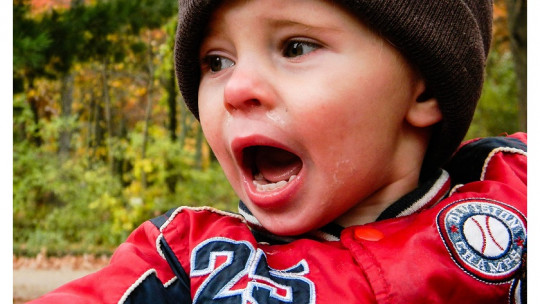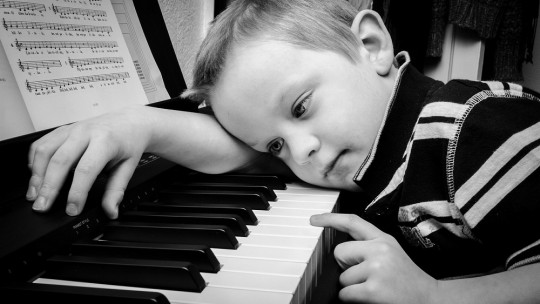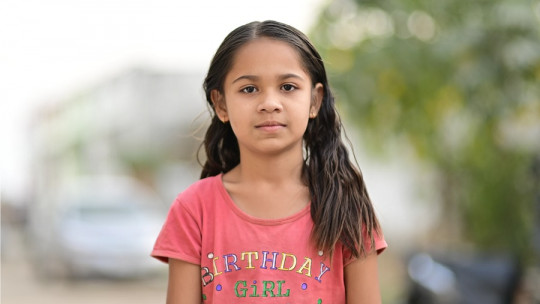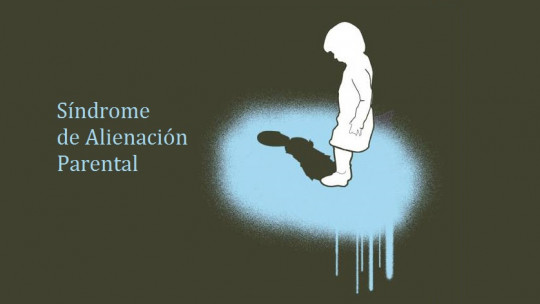
It is usually common to perceive very social children who do not feel any sense of strangeness in front of other people as something positive. Friendly, affectionate and friendly people that parents are usually proud of.
Although these behaviors do not have to be a problem, when they are expressed in an excessive manner They may be a reflection or manifestation of disinhibited social relationship disorder which is typical of the childhood stage and which we will talk about throughout this article.
What is disinhibited social relationship disorder?
Traditionally, disinhibited social relationship disorder (DSRD) was considered part of a broader diagnosis known as Reactive Attachment Disorder of Childhood. However, in the latest update of the DSM-V it is already established as a specific and independent diagnostic label.
This type of psychological alteration occurs exclusively in childhood and is characterized by presenting a specific pattern of behavior in which The boy or girl does not present any type of fear or discretion in relation to initiating any type of contact with unknown adults
These children present a totally uninhibited behavior in which they feel comfortable talking, initiating physical contact or even leaving with a person who is foreign or strange to them.
This very particular pattern of behavior appears around the first five years of life, so it can only be diagnosed as such between nine months and five years of age of the child. Furthermore, these behaviors tend to persist over time regardless of circumstances or changes in the environment that surrounds them, that is, they show constancy and are expressed in a wide variety of contexts and situations.
Development throughout childhood
At the moment in which the social relationship disorder is consolidated, the boy or girl manifests a tendency to present attachment-seeking behaviors, as well as persistent behaviors that reveal a non-selective bond. That is to say, The minor is capable of maintaining attachment bonds with any person
Around the age of four, these types of connections are maintained. However, Attachment-seeking behaviors are replaced by constant demands for attention and for indiscriminate expressions of affection and affection.
By the last stage of childhood, it is possible that the child has established a series of bonds with certain specific people, although affection-demanding behaviors tend to be maintained. Uninhibited behavior with schoolmates or peers is common.
Furthermore, depending on the context or the reactions of the people around him, The child may also develop behavioral alterations and emotional changes
This disorder has been observed more or less regularly in children whose parents or caregivers show frequent changes in terms of attachment manifestations, insufficient care, abuse, traumatic events, poor or insufficient social relationships.
Although they can also appear under other conditions, the highest incidence of this alteration usually occurs in boys and girls who have spent the first years of their lives in children’s institutions
What symptoms does it present?
The main symptoms of disinhibited social relationship disorder are behavioral in nature and take shape in the way the child relates to others, especially with adults.
The main symptoms of this condition include:
What are the causes?
Although a large number of childhood psychological disorders are usually attributed to some type of genetic defect, disinhibited social relationship disorder is a state that is based on a conflictive history of care and social relationships.
However, there are certain theories that point towards the possibility that certain biological conditions associated with the temperament of the minor and affective regulation. According to these theories, functional alterations in some specific brain areas such as the amygdala, hippocampus, hypothalamus or prefrontal cortex, can lead to changes in behavior and in the child’s ability to understand what is happening around them.
Regardless of whether these theories are true or not, for the moment social neglect and a deficit in the quality of care have been established as the main causes of the development of disinhibited social relationship disorder.
The contexts of family violence, the deficit of basic emotional assistance, education in non-family contexts such as orphanages or constant changes in primary caregivers They are the breeding ground for the impossibility of developing a stable attachment and the consequent development of this disorder.
TRSD diagnostic criteria
Because children with disinhibited social interaction disorder may appear impulsive or have attention problems, the diagnosis may be confused with Attention-Deficit/Hyperactivity Disorder.
However, there are a series of diagnostic criteria that allow the correct detection of this syndrome. In the case of the Diagnostic and Statistical Manual of Mental Disorders (DSM-V), the child must meet the following diagnostic requirements:
1. Approach behaviors and active interaction with strange adults
Two or more of the following criteria are also presented:
Behaviors in this criterion do not have to be limited to impulsivity, but must include socially disinhibited behaviors.
2. The minor has been involved in situations or contexts of deficient care
For example:
- Deficit in meeting basic emotional needs.
- Negligence situations
- Constant changes in custody or primary caregivers.
- Education in unusual contexts such as institutions with a large number of children per caregiver.
Furthermore, it must be deduced that the care factor of the second criterion is responsible for the behaviors of the first point.
3. The child’s age must be between 9 months and 5 years
This criterion serves to delimit the age range in which this mental alteration is considered to have its own characteristics.
4. The behaviors must continue for more than 12 months
A criterion to establish the persistence of symptoms.
Is there a treatment?
Treatment of disinhibited social relationship disorder Its objective is not only to modify the behavior of the child, but also that of the parents We must not forget that this is an alteration based on social interactions, and therefore it is very important to act not only on the patient, but also in their usual social context, in which the relevance of the family stands out.
In the case of parents or caregivers, actions must be carried out on certain aspects of the relationship with the child. Work on the transmission of security, the permanence of the attachment figure and sensitivity or emotional availability They are the three pillars to begin to perceive changes in the child.
In addition, the health professional must also carry out psychological treatment with the child that allows him or her to rebuild and restore his or her sense of security. This involves implementing “training” programs in new ways of relating to others and establishing consistent criteria to know in which situations it is advantageous to make approaches and in which it is not.
- American Psychiatric Association (APA). (2013). Diagnostic and statistical manual of mental disorders (5th ed.). Arlington, VA: American Psychiatric Publishing.
- Morales Rodríguez, PP, Medina Amor, JL, Gutiérrez Ortega, C., Abejaro de Castro, LF, Hijazo Vicente, LF, & Losantos Pascual, RJ. (2016). Disorders related to trauma and stress factors in the Psychiatric Expert Medical Board of the Spanish Military Health. Military Health, 72(2), 116-124.
- Zeanah CH (2000). Disturbances of attachment in young children adopted from institutions. J Dev Behav Pediatr. 21 (3): pp. 230 – 36.








